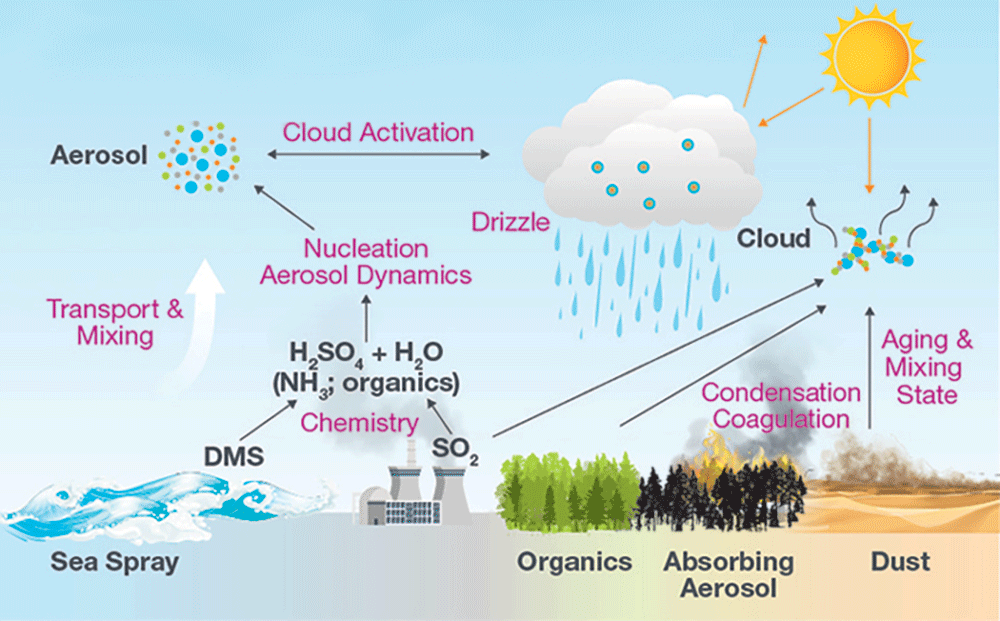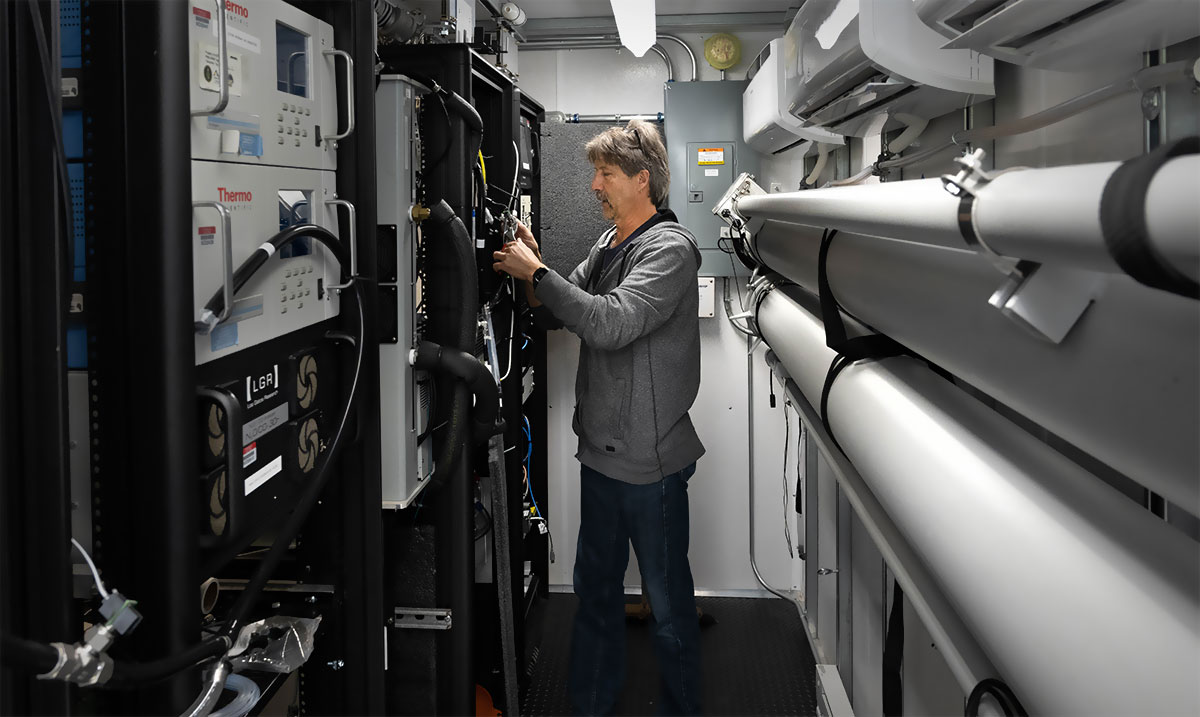Aerosol Processes and Measurement
The Aerosol Processes and Measurement Group investigates aerosols—populations of small particles in the atmosphere that form clouds, scatter light, and affect human health—and atmospheric gases. We investigate, measure, and model the properties of aerosols and the processes in which they participate by performing laboratory studies, modeling and theoretical analyses, and field measurements. We lead in the development of new tools for aerosol measurement, in laboratory and field, and novel approaches to aerosol simulation.
This work provides better process-level understanding of aerosol formation and evolution mechanisms, aerosol chemical composition, aerosol light absorption, and the direct and indirect influences of aerosols on clouds, precipitation, and extreme weather, as well as data that are used in forecasting models.
Research Goals
Our immediate goal is to close gaps in our understanding of aerosol lifecycle and to incorporate the new knowledge into models in a way that promotes computation efficiency and reduction of model uncertainty. Our longer-range goal is to improve scientific understanding and quantification of aerosol effects important on regional and global scales.

Aerosol lifecycle and processes
Atmospheric Radiation Measurement (ARM) program
The group provides measurement capabilities to the DOE Atmospheric Radiation Measurement (ARM) program for long-term measurements of aerosols and their precursors at a variety of locations around the globe. Scientists in this group participate in field and laboratory studies and act as Mentors for ARM instruments, and they are responsible for providing scientific expertise on the operation and deployment of the instruments, including repair, calibration, remote monitoring of instrument operation, establishment of operating conditions, data reduction, and quality control.
Aerosol Observations Group
The Aerosol Observations Group advances atmospheric science and technologies by supporting in-situ measurement of aerosol properties to support fundamental research on the particles floating around the Earth’s atmosphere and their impacts on weather, energy, and air quality. Our work specifically targets, across a range of spatial and temporal scales, the understanding of atmospheric particulate properties and the interactions of these particles with clouds, radiation, and atmospheric chemistry.
A core activity of the group is the design, integration, and ongoing operation of the U.S. Department of Energy's Atmospheric Radiation Measurement (ARM) Aerosol Observing Systems (AOS). These 20-foot mobile laboratories house suites of instruments capable of characterizing aerosol number concentration, size distribution, chemical composition, optical properties, hygroscopicity, and cloud-forming potential. Our team has expert knowledge of the design, configuration, and operation of these complex systems.
The AOS platforms are engineered for deployment in extreme environments and have supported long-term field campaigns in Antarctica, the Arctic Ocean, the Amazon rainforest, and high-altitude regions such as Colorado. The group currently provides operational oversight and scientific support for up to five deployed systems.

Inside an AOS unit designed and built by Brookhaven Lab staff for the ARM Facility.
Capabilities
- Measurement and modeling of aerosol formation processes, both direct and indirect, including nucleation and new particle formation
- Measurement and modeling of light scattering and absorption by aerosols
- Measurement of aerosol chemical composition
- Measurement of aerosol hygroscopicity and cloud drop activation potential
- Measurement of biomass-burning and black-carbon aerosols and their interpretation
- Aerosol evolution and chemical processing
Expertise
Aerosol measurement in both laboratory and field conditions including:
- Instrument design and fabrication
- Design, fabrication, and operation of a suite of aerosol instruments operating together
- Aerosol instrument calibration
- Development of efficient aerosol modeling approaches
- Next-generation instrument development and network design
- Scientific support for field operations
The AOS group works collaboratively across the department, directorate, and laboratory to ensure its efforts align with institutional and US Department of Energy priorities and to help drive innovation in atmospheric science and measurement technologies.
-

Art Sedlacek
Atmospheric Chemist
Aerosol Processes
Environmental Science and Technologies Department
(631) 344-2404, sedlacek@bnl.gov




